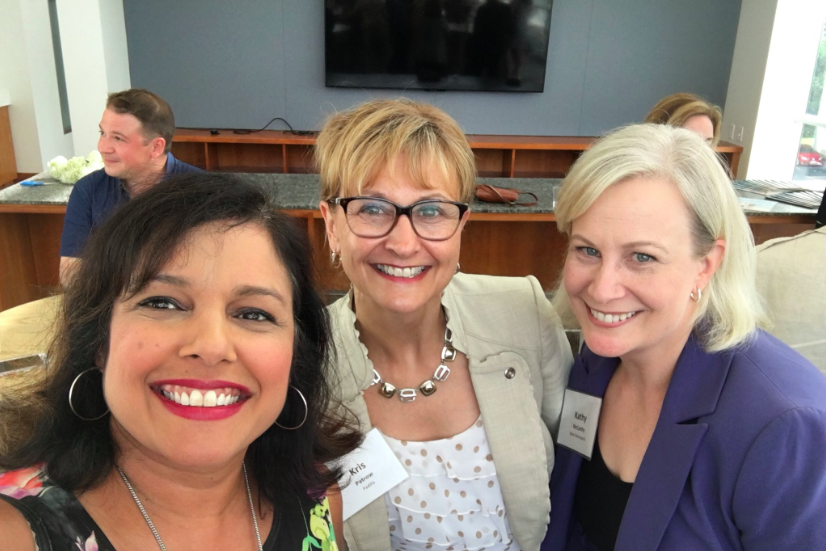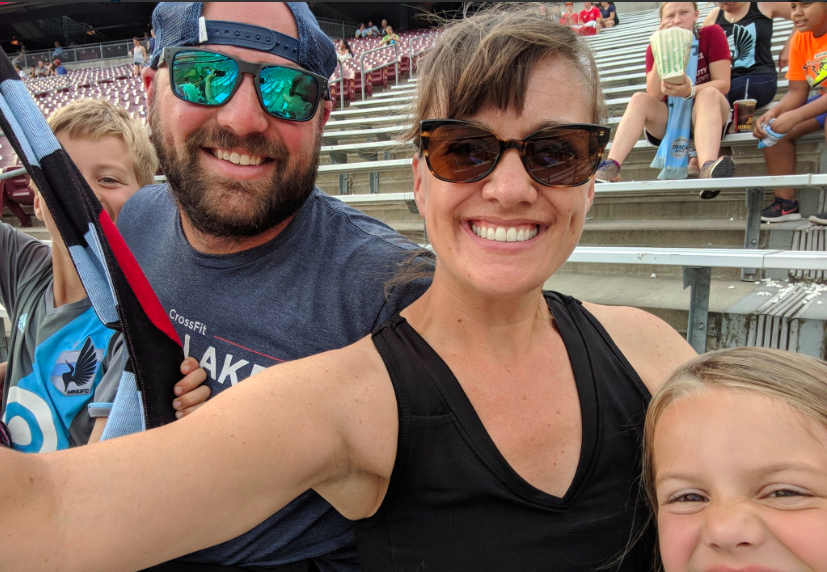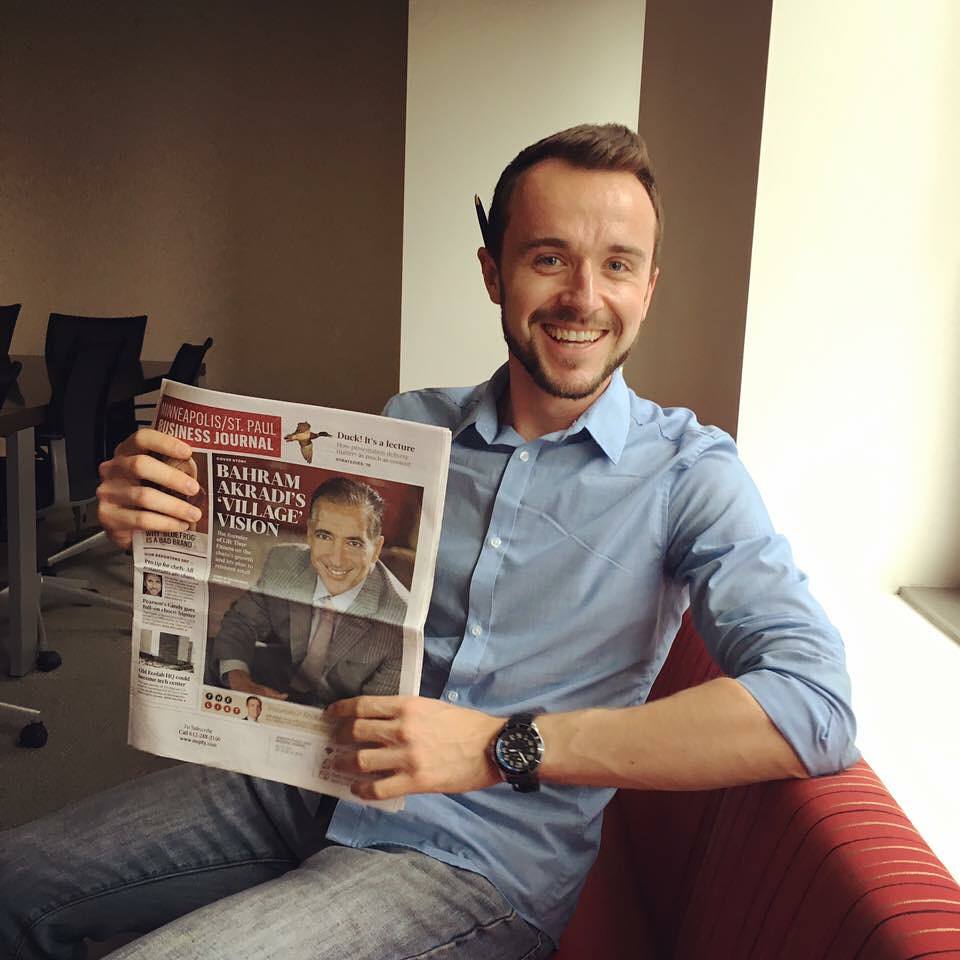Since the beginning of the year, I’ve noticed a distinct trend: more former media folks making the transition to the PR/social side.
I know, I know, I’m not breaking news here. Newsrooms are more lean than ever before. Newspapers are cutting staff. In many ways, the media isn’t the best place to work right now. But, I’ve seen more people make the move in the last year than in recent memory (or, maybe it’s just people I recognize!).
And, more to the point, I’ve been MEETING with more of these people. Probably about 5-6 just this year. Some of these people I’ve known for years. Others I’m meeting for the very first time. In almost all cases, they’ve been wonderful, warm and generous people. And I wish them nothing but the best.
Some of these folks are already in new roles and doing very well. So today, I thought I’d ask some of these former media folks how the transition is going–what have been the struggles? Why did they make the move? What’s surprised you so far?
Let’s hear from four former media people–Vineeta Sawkar (formerly of KSTP-TV), Jay Olstad (formerly of KARE-11), Lynn Melling (former anchor in the Des Moines market), and Dan DeBaun (formerly of the Minneapolis/St. Paul Business Journal).
Vineeta Sawkar, senior media relations manager, University of St. Thomas

Tell us about your media background–and about your current role on the PR/comms side.
I was in the TV news business for 23 years. I spent most of it at KSTP-TV. I anchored and reported there for almost 18 years. I am now a senior media relations manager at the University of St. Thomas.
Why did you decide to pursue a career in PR/comms after so many years in the media?
KSTP-TV told me in August of 2012 that they weren’t renewing my contract and they would give me a year to find another job. I had a non-compete clause so I couldn’t work in this market in TV. I didn’t want to move so I worked on reinventing myself. It was a tough journey. You know you have skills but you don’t know how they will translate outside of journalism. I saw that the Star Tribune was doing video so I asked if I could help them shape their video product. They were wonderful! I spent three years there and decided it was time for me to delve into the PR work. HealthPartners had a great opening and I was there for two years. I learned so much from some great people. I am forever grateful. When the opening came up at St. Thomas, I jumped at it because it is a premiere university and I always wanted to try higher ed. I absolutely LOVE it here.
What have you found to be the biggest challenge in your shift from journalist to PR?
The journalism world is much more fast-paced. I was always used to constant deadlines. Things are slower in PR.
Is there anything you’ve been surprised by in your transition? Like, “I had no idea PR folks spent this much time doing THIS?!?!”
I never realized how PR people shape the story to promote specific priorities. I thought any good publicity is a win but it’s really about pillars of importance and priorities.
What’s the one thing you’ve truly enjoyed about being on the PR/comms side so far?
Teaching people on the PR side about the journalism side. Many of them have never been reporters. I also really enjoy media coaching and teaching people how to shoot and edit videos on their phones.
I thought this recent WaPo article was interesting. Now that you’ve sat on both sides of the fence, what do you see as the future of PR/media relations? And, how can companies better work with the media in the years ahead?
We still need each other. There is such a large news content hole that needs to be filled between newscasts, websites, social media, etc. Media still need content. PR professionals still need earned media to promote priorities. As much as we can tell our story on our own channels, we must have some earned media to keep our leaders happy. Cultivating the relationships will be important for both sides.
Jay Olstad, senior video producer & script writer, United Health Group

Why did you decide to pursue a career in PR/comms after so many years in the media?
Two things:
Is there anything you’ve been surprised by in your transition? Like, “I had no idea PR folks spent this much time doing THIS?!?!”
What’s the one thing you’ve truly enjoyed about being on the PR/comms side so far?
A lot of things. Using my storytelling skills that I’ve built up over my 18 year career in radio & TV but in a new way. It’s more strategic than I’ve done in the past. I’ve also realized having the ability to tell people’s stories is a skill that goes well beyond the airwaves.
I thought this recent WaPo article was interesting. Now that you’ve sat on both sides of the fence, what do you see as the future of PR/media relations? And, how can companies better work with the media in the years ahead?
Lynn Melling, Account Supervisor, Karwoski & Courage

Tell us about your media background–and about your current role on the PR/comms side.
I started working in TV news during college and logged 18 years in the business. I was most recently an anchor/reporter at WHO-TV in Des Moines, from 2005-2016. I covered everything from politics to health to natural disasters. I really loved news, but the emotional toll of reporting on tragedies everyday pushed me to explore other career opportunities.
Today, I’m back in my home state of Minnesota working as an Account Supervisor at Karwoski and Courage, a PR firm based in downtown Minneapolis. My job boils down to figuring out how to get my clients in front of the right eyeballs in meaningful and memorable ways. I work across the spectrum of earned, owned and paid media. Those disciplines are becoming more and more intertwined, and I enjoy building integrated strategies that bring them all together.
Why did you decide to pursue a career in PR/comms after your time in the media?
My husband started a video production business (515 Productions) 12 years ago, and working with him on a variety of projects over the years gave me the bug to jump into this industry full-time. He’s really creative and helped rewire my news brain to approach projects in ways that cut through the noise and make an impact. It’s challenging, exhilarating and fun.
What have you found to be the biggest challenge in your shift from journalist to PR?
Patiently waiting for the death of press releases and media kits. As a former reporter who deleted dozens of press releases a day and threw out every single media kit and desk drop she ever received, it frustrates me that our industry continues to crank them out in such high volumes without much, if any, strategy behind them. It’s like being on autopilot. In some circumstances, especially in B-to-B marketing, they do serve a purpose. But, in general, reporters don’t want a product pitch on a press release. They want a good story.
Is there anything you’ve been surprised by in your transition? Like, “I had no idea PR folks spent this much time doing THIS?!?!”
I’ve been surprised by how similar content marketing is to journalism. It’s basically the same thing. I’m now a reporter for my clients’ brands, searching around for the interesting nuggets that make them attractive not only to reporters and editors, but to their target consumers. When I first made the jump from news, I was terrified that I’d have no idea what I was doing. I’ve been pleasantly surprised to find that my skills as a reporter are what make me good at my job now.
What’s the one thing you’ve truly enjoyed about being on the PR/comms side so far?
I have awesome clients who give me room to get creative, which makes my job fun. I enjoy figuring out solutions to their challenges. I love coming up with new and interesting ways to tell their stories that develop meaningful connections with their audiences. At the end of the day, it’s all about building and nurturing relationships, which, as an extrovert and social person, I really enjoy.
I thought this recent WaPo article was interesting. Now that you’ve sat on both sides of the fence, what do you see as the future of PR/media relations? And, how can companies better work with the media in the years ahead?
Those of us in media relations need to do a better job of relating to the media. Journalists have taken a beating lately. Sure, there are always bad apples in every bunch, but the vast majority of journalists I know got into the business because they wanted to make a positive difference in the world. As members of the fourth estate, they play a critical role in preserving our democracy. Without the press, our society is screwed. And companies/PR folks need to treat them with the respect they deserve, rather than as tools to be used in a marketing plan. If you respect them, their craft and their purpose, they’ll respect you… and be more inclined to throw you a bone when you’re trying to get results for a client.
In the years ahead, companies/PR folks need to understand the changing landscape of journalism and adapt accordingly. Media conglomerates are eating up local news outlets. Newsroom resources are being slashed. Shrinking staffs and increasingly inexperienced newsies have to fill more shows and social media channels with a dwindling amount of quality content. That is where those of us on the other side of the fence can step in.
Brands essentially have an opportunity to become their own newsrooms and identify the stories that reporters no longer have the time to enterprise and produce. Many brands are already producing their own content for owned media purposes, but I think there will soon be more opportunities to take that content into the earned media space, giving it third-party credibility that owned media can’t achieve. This is where the strategy of sticking to owned media, as discussed in the WaPo article, falls short. Having someone else tell your story is far more powerful than telling it yourself.
In the coming years, I believe there will also be more opportunities for brands to collaborate directly with news outlets in producing that content. The current partnership between NPR and Kaiser Permanente (Kaiser Health News) is a perfect example of that. Those kinds of partnerships will require a delicate balance, so journalists can maintain their ethical standards and brands can achieve a proper ROI, but I think it is an opportunity ripe for the picking.
In the Washington Post article, this line hits the nail on the head: “One, they don’t trust us. And, two, they don’t need us.” I’ve left my fair share of messages on corporate voicemail boxes, and I’ve had to use the “no comment” response in countless stories. It is such a wasted opportunity for brands. If it’s the trust factor/risk aversion driving that decision, they could be mitigating that risk with a proactive PR plan that injects positive brand stories into the news cycle and builds solid relationships with reporters. That’s how you build trust. It’s alot like buying life insurance or putting money into an emergency savings account. You might never need it, but if you do, it pays off big time.
For the brands that think they don’t need the press, I will say this: owned and paid media can only take your reputation so far. No one likes to hear you brag about yourself. But when someone else brags about you, that’s how you build credibility. That’s how you get people to like you and buy your stuff. That’s the power of earned media.
There also seems to be this notion floating around that journalism is on the road to extinction, so brands can stop worrying about having to deal with reporters. Well, here’s a newsflash: journalists have been around since the dawn of time. Whether they’re carving stories on the inside of a cave or posting them on Facebook, reporters will always be chasing stories. The formats and delivery methods might change, and things may be a bit rocky in the industry right now, but journalists will never go away. And if they do, we will all have much bigger things to worry about than a marketing plan.
Dan DeBaun, public relations specialist, Life Time

Tell us about your media background–and about your current role on the PR/comms side.
I was most recently the restaurants and retail reporter at the Minneapolis St. Paul Business Journal and also did some social media management while I was there. I did a lot of reporting on new restaurants and large businesses in town like Target, Best Buy and, yes, Life Time of course! Prior to the Business Journal I worked in radio for three years as a general assignment reporter at AM1240-WJON in St. Cloud.
At Life Time, I spend a good chunk of time pitching stories to media across the country and Canada. We have 138 athletic resort destinations in North America – so it’s a lot of ground to cover. Specifically, I’ve started to take charge of our markets west of the Mississippi River. In the course of a day I could be talking to a TV producer in San Antonio and a newspaper reporter in Minneapolis to line up segments and stories. Each day is different! In order to make sure I have the most up to date information, I’m constantly checking in with our companies inside – ranging from LifeCafe to Life Time Tennis. I also spend time each day responding to media inquiries, posting to our Life Time Newsroom Twitter and LinkedIn pages and monitoring media coverage of Life Time by compiling reports for our company leadership.
Why did you decide to pursue a career in PR/comms after starting in the media?
Life Time caught my attention and didn’t let go ever since I interviewed our CEO Bahram Akradi for a cover story with the Business Journal last year. During our conversation he shared with me a lot of interesting thoughts about Life Time’s unique positioning as a healthy way of life company and its future in the changing retail landscape. I left the interview thinking “Man…wouldn’t it be neat to work at a company like that?” I think my background as a journalist plays well in corporate communications/PR. I always put myself in the shoes of reporters that I pitch to ensure I’m not wasting both their time and mine. I can also roll with the punches and maintain a flexible schedule whenever it’s needed. I thrive under pressure. Health and wellness has also been a huge part of my life in recent years. I enjoy running, lifting weights and trying new group fitness classes. When I’m able to mix my passion for health and communication into my work every day, I’m going to bring a lot of energy to the table.
What have you found to be the biggest challenge in your shift from journalist to PR (so far)?
Getting used to the size and scope of communications at a large company. It’s taken some time to get to know each piece of Life Time and the people in charge of each one. When pitching, it’s also been an adjustment to get to know the movers and shakers in each market. I put together and maintain quite a few media lists!
Is there anything you’ve been surprised by in your transition? Like, “I had no idea PR folks spent this much time doing THIS?!?!”
The amount of internal planning, which I’m thankful for. When I was a reporter, everything was usually “go go go” 99 percent of the time. I appreciate the time dedicated to brainstorming, crafting a plan and executing it. It helps having a great team that’s open to big ideas and trying new things.
What’s the one thing you’ve truly enjoyed about being on the PR/comms side so far?
The public relations and internal communications team at Life Time is amazing. After only three or so months on the job, I feel like I’m a part of a family here. The company and its vision just feels like a perfect fit regarding many areas of life I’m passionate about – health and fitness, helping others and storytelling. It’s a rewarding place to be when Life Time helps its members live happy, healthy lives every day. I may not be impacting our members directly in the club, but I feel connected to our mission by helping to craft the story we’re telling. How could I not enjoy this?

0 Comments